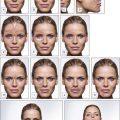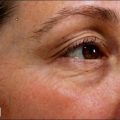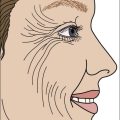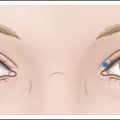1 Therapeutic uses of the botulinum toxins
Summary and Key Features
• Botulinum toxins exzymatically affect the SNARE proteins in neural endings
• Botulinum toxins will reduce and prevent the release of substances exocytosed by SNARE proteins
• Reduction of SNARE function may have therapeutic implications for autonomic, sensory and motor parts of the nervous system
• Reduction of acetyl choline neurotransmitter can reduce the hyperfunction of muscles in various dystonias
• Reduction of acetyl choline neurotransmitter can reduce autonomic nervous system hyperfunction such as hyperhidrosis and sialorrhea
• Reduction of SNARE function can also reduce the release of inflammatory mediators such as substance P, CGRP, glutamate and others
• Reduction of inflammatory mediators can have an affect on pain syndromes
• Pain syndromes such as post-herpetic neuralgia, migraine headaches, TMD can be improved with botulinum toxin
• Inflammatory conditions such as rheumatoid arthritis may be improved with intra-articular injections of botulinum toxin
• Bioengineered toxins may allow precise localization and decrease of exocytosed proteins such as hormones
Introduction
The following material will in greater depth describe the use of botulinum toxins for the management of disorders of efferent nerves and muscular hyperfunction; afferent nerves, pain disorders, and inflammatory conditions; autonomic nervous system disorders; and glandular hypersecretion. (See Box 1.1.)
Aoki KR. Evidence for antinociceptive activity of botulinum toxin type A in pain management. Headache. 2003;43(suppl 1):S9–S15.
Arad-Cohen A, Blitzer A. Botulinum toxin treatment for symptomatic Frey’s syndrome. Otolaryngology, Head and Neck Surgery. 2000;122:237–240.
Binder WJ, Brin MF, Blitzer A, et al. Botulinum toxin type A (Botox) for the treatment of migraine headaches; an open-label study. Otolaryngology, Head and Neck Surgery. 2000;123:669–676.
Blasi J, Chapman ER, Link E, et al. Botulinum neurotoxin A selectively cleaves the synaptic protein SNAP-25. Nature. 1993;365:160–163.
Blitzer A, Brin MF. Use of botulinum toxin for diagnosis and management of cricopharyngeal achalasia. Otolaryngology, Head and Neck Surgery. 1997;116:328–330.
Blitzer A, Brin MF, Greene PE, et al. Botulinum toxin injections for the treatment of oromandibular dystonia. Annals of Otolaryngology, Rhinology and Laryngology. 1989;98(2):93–97.
Blitzer A, Brin MF, Stewart C. Botulinum toxin management of spasmodic dysphonia (laryngeal dystonia): a 12 year experience in more than 900 patients. Laryngoscope. 1998;108:1435–1441.
Blitzer A, Zalvan C, Gonzales-Yanes O, et al. Botulinum toxin injections for the management of the hyperfunctional larynx. In: Brin MF, Jankovic J, Hallett M. Scientific and therapeutic aspects of botulinum toxin. Philadelphia: Lippincott Williams & Wilkins; 2002:207–217.
Carruthers JDA. The treatment of congenital nystagmus with Botox. Journal of Pediatric Ophthalmology and Strabismus. 1995;32:306–308.
DeFazio G, Abbruzzese G, Girlanda P, et al. Botulinum toxin A treatment for primary hemifacial spasm: a 10 year multicenter study. Archives of Neurology. 2002;59:418–420.
Diener HC, Dodick DW, Aurora SK, et al. PREEMPT 2 Chronic Migraine Study Group. OnabotulinumtoxinA for treatment of chronic migraine: results from the double-blind, randomized, placebo-controlled phase of the PREEMPT 2 trial. Cephalalgia. 2010;30(7):804–814. Epub 17 Mar
Freund B, Schwartz M, Symington JM. Botulinum toxin: new treatment for temporomandibular disorders. British Journal of Oral and Maxillofacial Surgery. 2000;38:466–471.
Frucht SJ. Focal task-specific dystonia in musicians. Advances in Neurology. 2004;94:225–230.
Gless R, Nauman M, Werner B, et al. Injections of botulinum toxin A into the salivary glands improve sialorrhea in amytropic lateral sclerosis. Journal of Neurology, Neurosurgery, and Psychiatry. 2000;69:121–123.
Glogau RG. Botulinum A neurotoxin for axillary hyperhidrosis. Dermatologic Surgery. 1998;24:817–819.
Gui D, Cassetta E, Anastasio G, et al. Botulinum toxin for chronic anal fissure. The Lancet. 1994;344(8930):1127–1128.
Laskawi R, Damanez W, Roggenkamper P. Botulinum toxin treatment in patients with facial synkinesis. Archives of Otolaryngology. 1994;4:S195–S199.
Liu HT, Tsai SK, Kao MC, et al. Botulinum toxin A relieved neuropathic pain in a case of post-herpetic neuralgia. Pain Medicine. 2006;7(1):89–91.
Maria G, Brisinda G, Civello IM, et al. Relief by botulinum toxin of voiding dysfunction due to benign prostatic hyperplasia: results of a randomized, placebo-controlled study. Urology. 2003;62:259–264.
Meng J, Wang J, Lawrence G, et al. Synatorbrevin I mediates exocytosis of CGRP from sensory neurons and inhibition by Botulinum toxin reflects their anti-nociceptive potential. Journal of Cell Science. 2007;120:2864–2874.
Pasricha P, Ravich W, Kalloo A. Botulinum toxin for achalasia. The Lancet. 1993;341:244–245.
Phelan MW, Franks M, Somogyi GT, et al. Botulinum toxin urethral sphincter injection to restore bladder emptying in men and women with voiding dysfunction. Journal of Urology. 2001;165:1107–1110.
Scott AB. Botulinum toxin injection of the eye muscles to correct strabismus. Transactions of the American Ophthalmologic Society. 1981;79:734–770.
Shaari CM, Sanders I, Wu BL, et al. Rhinorrhea is decreased in dogs after nasal application of botulinum toxin. Otolaryngology, Head and Neck Surgery. 1995;112:566–571.
Smith SJ, Ellis E, White S, et al. A double-blind, placebo controlled study of botulinum toxin in upper limb spasticity after stroke or head injury. Clinical Rehabilitation. 2000;14:5–13.






